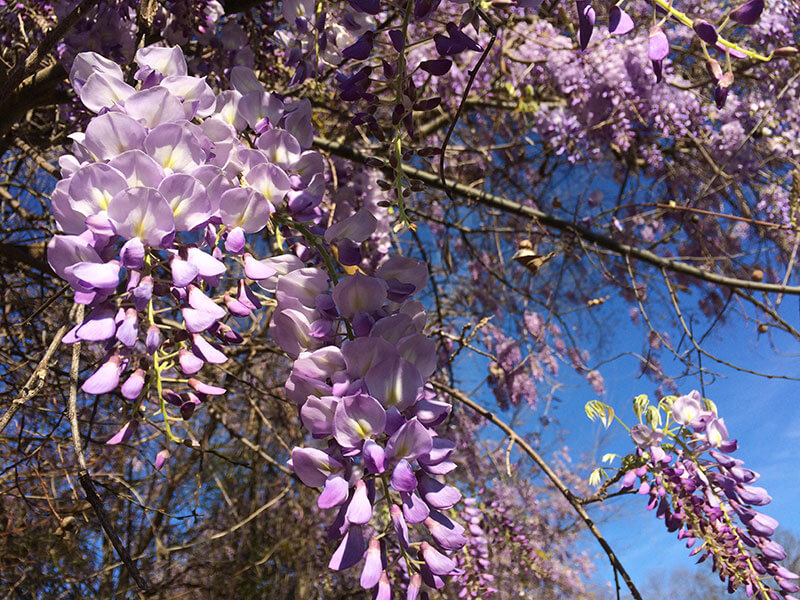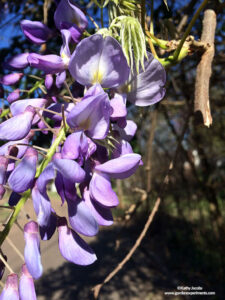Wisteria vines bloom in early March, adding a sweet floral scent to the air. The flowers appear before the leaves.
In the South, this vine is everywhere—in the forest, in neighborhoods, in rights-of-way, and even along highways. That is both the joy of and the pitfall of Chinese wisteria, which has purple flowers that grow on a vine.
Wisteria has an Invasive Nature
Chinese wisteria has been listed as invasive in 19 states (source: invasive.org). This invasive vine with purple flowers has been planted throughout the U.S.
How This Vine with Purple Flowers Got Here & How it Grows
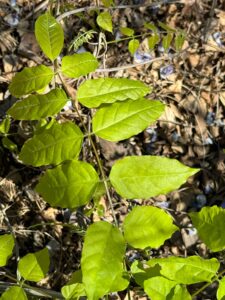
Wisteria sinensis was brought to the U.S. in the 1800s from China as an ornamental. It has a very fast growth rate and requires frequent pruning. Where the nodes touch the soil, the wisteria vine produces roots. It sends out new growth wherever possible and will even sprout where trimmed.
Chinese wisteria (Wisteria sinensis) is quite the go-getter. It will climb walls, trees, fences, light poles, and pretty much anything that gives it access to the sun and an advantage over the plants around it.
Wisteria Shades Out Other Plants
Due to its rapid growth rate and its ability to climb up just about anything, Chinese wisteria will shade out other plants and even girdle trees – resulting in their death.
It takes advantage of openings caused by fallen trees or timber harvests, growing quickly into the gap. Doing so may alter plant successional pathways by shading out the plants below it.
Check out the photo below. It looks like its a tree with hanging purple flowers.
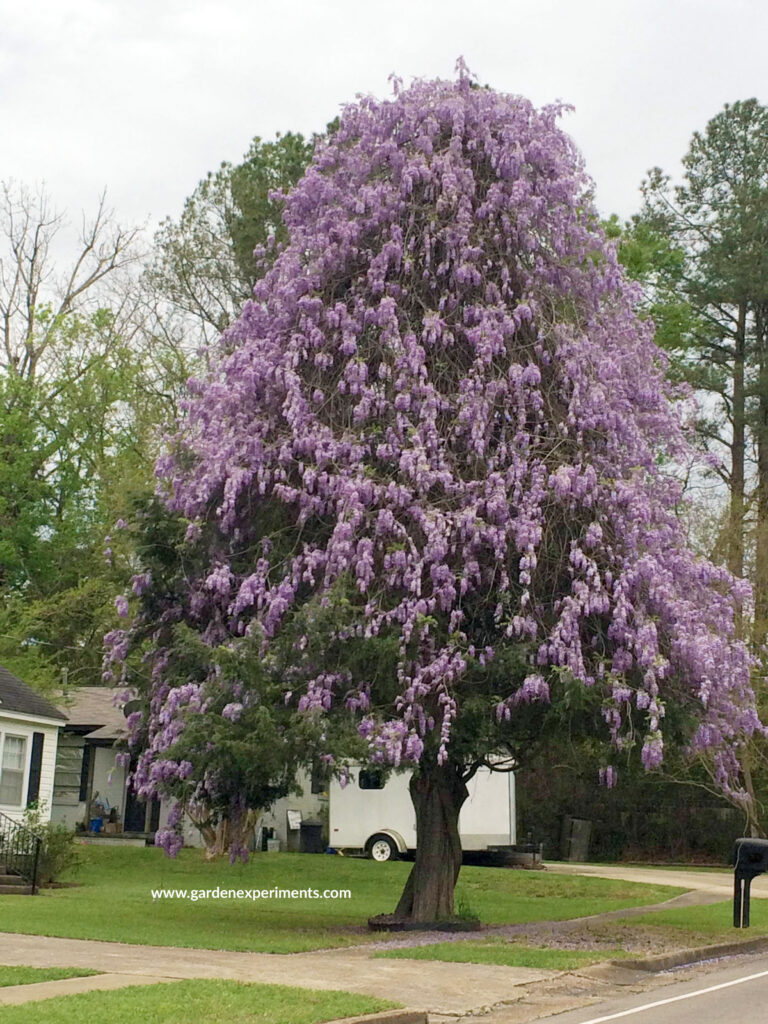
An Arbor Covered in Wisteria
An arbor covered with dangling purple blooms of wisteria in front of an antebellum home seems perfect. It makes me think of days spent sitting on the front porch sipping sweet tea and enjoying the company of friends and family.
It’s funny that a nonnative vine makes me think of being in the South. Growing up, I saw wisteria everywhere. When it blooms, it is hard to miss. You’ll see pale purple flowers just about everywhere you look — and you’ll certainly smell them.
Alternative Plants to Chinese Wisteria
If you love the purple flowers growing from the wisteria vine, but don’t want to contribute to its escape into the wild, consider planting a native wisteria vine.
American wisteria, Wisteria frutescens, also has purple hanging flowers. It is a deciduous vine that grows counterclockwise. It is a fast to moderate-growing vine that blooms in early to late summer. It prefers acid soils, moist soil, or well-drained soil and needs at least 4 to 6 hours of sun per day. In the wild, this native vine can be found along stream borders, in moist soils, and in thickets.
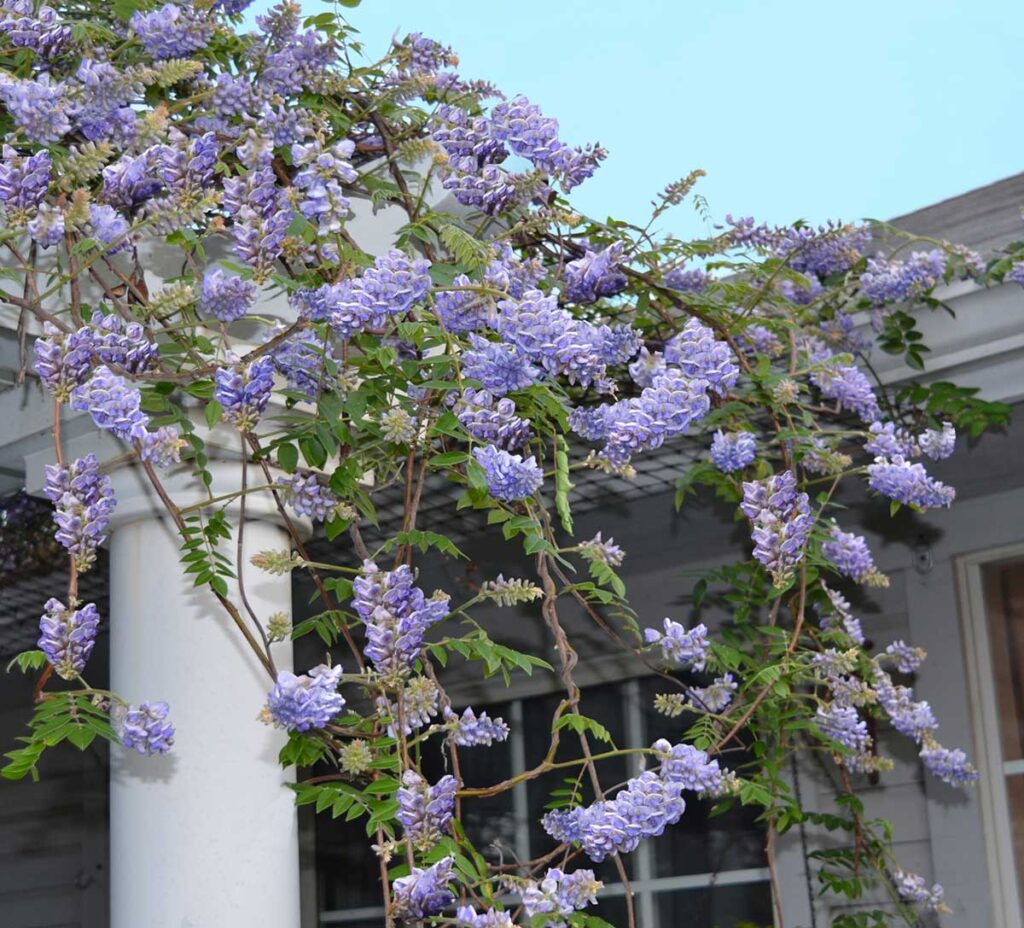
One of the best ways to distinguish Chinese wisteria from American wisteria is through seed pods. Chinese wisteria seed pods are fuzzy, while American wisteria seed pods are smooth.
Another great vine to consider planting instead of Asian wisteria is the native cross vine (Bignonia capreolata). It’s easy to grow, hardy, tolerates the heat, has a low water requirement, and can grow in both full sun and part shade. This vine produces gorgeous, bright orange to orange-yellow tubular flowers that attract hummingbirds.
Fun Fact
Japanese wisteria as it climbs will twine clockwise around what it is growing on, whereas Chinese wisteria will twine counter-clockwise. How crazy is that?

